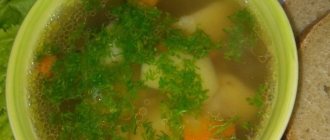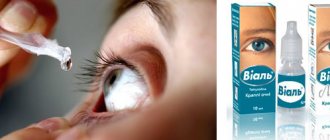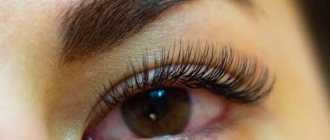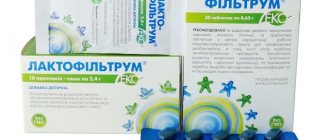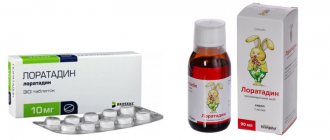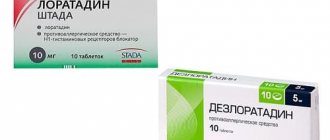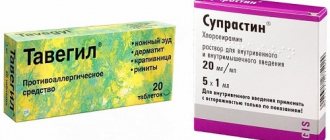Adverse reactions during hirudotherapy
Adverse reactions during hirudotherapy include the following manifestations:
- hyperemia (redness)
- itching
- swelling
- local increase in temperature at the bite sites
- enlargement of regional lymph nodes.
All these manifestations form a symptom complex, the so-called prefix reaction.
The prefix reaction usually occurs easily, but sometimes there are severe reactions, accompanied by a general reaction of the body in the form of high body temperature, myalgia (muscle pain), and deterioration in general well-being.
It is important to remember that the prefix reaction is a natural phenomenon that develops in the body during the course of hirudotherapy.
Typically, a prefix reaction occurs 8–12 hours after the 3rd–4th procedure.
It is believed that the prefix reaction is the result of activation of the immune system, and the nature of its manifestations is determined by the degree of disruption of metabolic processes in the skin (in the projection of certain affected organs and systems). During the development of the prefix reaction, histamine is released, so taking antihistamines (such as Tavegil, Suprastin, Claritin, Diazolin, etc.) significantly reduces the manifestation of the prefix reaction during hirudotherapy.
Although the prefix reaction is realized with the participation of the immune system, this is not a manifestation of allergy, and further use of hirudotherapy, even in patients with a pronounced prefix reaction, is not contraindicated.
In my practice, I often encountered patients with a pronounced prefix reaction. In many of them, with further treatment, this reaction practically disappeared, or proceeded much easier.
You should also not be afraid of enlarged lymph nodes during hirudotherapy. After 1 – 2 weeks they usually decrease. After a course of hirudotherapy, there is a significant improvement in both humoral and cellular immunity, and enlargement of lymph nodes is considered as one of the manifestations on the path to restoration of immunity.
Thus, the prefix reaction is considered as a manifestation of the activation of defense systems, and we warn patients about it in advance.
To reduce the reaction, we use cold compresses with soda (1 teaspoon of soda per 1 glass of water), treat the bite site with a 5% solution of potassium permanganate (potassium permanganate). If the reaction is severe, we prescribe antihistamines. Fenistil-gel can be used topically. Various procedures are recommended to cleanse the body: siphon enemas, herbal medicine, hydrotherapy.
Complications after hirudotherapy occur less frequently.
This complication after hirudotherapy occurs due to poor wound care, non-compliance with the hygienic regime, and when scratching the wound.
Treatment is the same as for any purulent infection. In any case, you should contact your doctor.
This complication is not a contraindication for further hirudotherapy.
This has not occurred in my personal practice.
With hirudotherapy, bleeding lasting more than 48 hours is considered excessive. Until this time, bleeding is a normal phenomenon accompanying treatment with leeches.
A complication of this type is possible if the patient has a blood clotting disorder (therefore, a blood test before a course of hirudotherapy is required), as well as in case of a technical error (when placing a leech over superficial vessels). In this case, a tight pressure bandage or tight tamponing with adhesive tape is necessary. In rare cases, the wound is sutured. In personal practice, I encountered similar complications twice.
This is the most dangerous complication after hirudotherapy, fortunately very rare.
An allergic reaction can manifest itself in the form of urticaria, angioedema, and even anaphylactic shock.
In this case, hirudotherapy is stopped and the patient is warned that he is allergic to leeches.
Unlike the prefix reaction, with an allergy to leeches an immunological memory is formed, and when the procedure is repeated, even after a long period of time, a severe allergic reaction will appear immediately after the first procedure, and may be even more serious.
Everyone has heard about this method of treatment, which involves a leech bite, but few people decide to carry it out. This is due to the lack of coverage of the issue of hirudotherapy, its benefits and safety for human health. That is why it is worth finding out in more detail what positive aspects this method of treatment, known since ancient times, has, how serious the body’s adverse reactions can be and how to get rid of itching and soreness. First of all, it is necessary to identify all the beneficial properties that hirudotherapy has:
- A leech bite can have an antiplatelet effect, that is, reduce to a minimum the risk of a person developing thrombosis.
- These bloodsuckers contribute to the effective normalization of metabolism, which helps obese people lose excess weight in the shortest possible time.
- Thanks to therapy carried out using leeches, blood circulation in internal organs and tissues improves.
- Even one hirudotherapy procedure can normalize a person’s blood pressure.
We suggest you familiarize yourself with what Bepanten ointment is used for.
Also, thanks to leech bites, immunity is increased, the functioning of the nervous system is activated and most pathogenic microorganisms localized in the human body are destroyed. Based on the above factors, it can be noted that the benefits that leeches can provide are quite great and significantly outweigh possible side (post-prefix) reactions. That is why they are not considered by specialists as a contraindication for further therapy.
The fact that after a leech bite the skin turns red and begins to itch is quite natural. It is called the post-attachment reaction of the body, which can also be accompanied by pain at the site of exposure to the bloodsucker, swelling and an increase in the temperature of the skin. The appearance of such negative signs is due to the fact that the sucking leeches release certain substances that activate the human immune system.
As a result of the activation of certain internal mechanisms in the human body, protective cells begin to produce inflammatory mediators (biologically active substances, biologically active substances that support the inflammatory process). The main one is histamine; rostaglandins and serotonin can also be formed.
The appearance of adverse reactions, according to experts, is quite possible to prevent. To do this, you just need to meet certain conditions. The first of these is the doctor’s direct consideration of the patient’s contraindications. Among them are the following:
- Hemorrhagic diseases. These pathologies are characterized by low blood clotting, which is why a person has a tendency to prolonged bleeding.
- Severe iron deficiency anemia with hemoglobin levels not rising above 100 g/l.
- Individual intolerance to leeches.
Serious complications associated with hirudotherapy are quite rare. If the specialist takes into account all contraindications and also carries out the procedure correctly, undesirable consequences will be minimized. That is why this event should be carried out only by experienced specialists who can take into account all possible nuances and prevent the development of negative effects.
Why does the bite site itch after leeches?
A leech bite is not as safe as some herudotherapy enthusiasts claim. Leeches are annelids that belong to the phylum Annelida and belong to the subclass Hirudinea
Most live in fresh water, but some species can be found in terrestrial and marine environments. The most famous medicinal leeches feed on the blood of vertebrates and invertebrates.
Leech bites have been used in medicine since ancient times to remove blood from patients. Nowadays, they are used in the replantation of body parts, reconstructive and plastic surgeries, and in Germany for the treatment of osteoarthritis.
Bite on a cow's udder
The number and position of the eyes are important for distinguishing leech species.
Like other ringed animals, the leech is a segmented animal. But unlike other ringed animals, they do not have a correspondence between the external segmentation of the body surface and the internal one.
The surface of the animal's body is divided into 102 rings, and the internal structures are divided into 32 segments. The first four front ones are the head, which consists of the forebrain and sucker. This is followed by the midbody segments, which include 21 neural ganglia, two reproductive organs and nine pairs of testes.
The last seven segments are fused from the tail into the sucker and hindbrain.
Reproduction has both female and male organs (ovaries and testes).
Mouth sucker
In most bloodsucking animals, the digestive system begins with the jaws, three blades located at an angle to each other. They cut the host's skin, leaving a Y-shaped mark.
Some blood-sucking species can take blood up to five times their body weight.
It produces an anticoagulant that prevents blood clotting, as well as other agents that inhibit microbial breakdown of the blood.
These measures are so effective that a mature medicinal leech does not need to be fed more than twice a year.
Behavior
Slug attack
Some types of leeches prey on small invertebrates, which they swallow whole. To do this, they use front suckers for penetration.
Only some species feed on blood, not all can bite; 90% of them feed exclusively on the decaying bodies and open wounds of amphibians, reptiles, waterfowl, fish, and mammals.
A leech sucks when it bites, it will not stop until it is full, at which point it falls off to digest the food. Thanks to hirudin, bites may bleed more than regular wounds after the bloodsucker is removed
Saliva contains anesthetic compounds to numb the bite area, but this has not been proven.
Depending on the type and size, bites can be barely noticeable or quite painful.
Number of eyes
Leeches usually carry parasites in the digestive tract, but they cannot survive in the human body, which means they do not pose a threat.
However, bacteria, viruses, and parasites from previous blood sources live in the leech for several months.
Prevention, treatment, removal
They can be removed manually as they do not penetrate the skin. The pain may last for about a week.
One recommended removal method is to use a fingernail or any flat, blunt object to pry off the oral suckers on the front end of the leech, repeating the procedure with the rear end, and then remove it. Once the suction cup is broken, the parasite will disable its jaws.
Common, but not medically advisable, methods for removing a leech are the use of a flame, a lit cigarette, salt, soap, alcohol, vinegar, lemon juice, repellent, or certain carbonated drinks.
All of these methods lead to the leeches quickly detaching. However, they vomit the contents of their stomach into the wound. This increases the risk of infection.
Find out more Top 10 most severe animal bites
It will separate and fall off on its own when it drinks blood. The process lasts from 20 minutes to two hours or more. Internal bites, such as those inside the nasal passage or vagina, require medical attention.
After removal or detachment, the wound should be cleaned with soap and water and bandaged. Bleeding may continue for some time due to hirudin.
Bleeding time lasts from several hours to three days.
This depends on hirudin, as well as other compounds that reduce the surface tension of the blood. Antithrombotic drugs also affect bleeding time.
Applying pressure helps reduce bleeding. Blood loss from one bite is not dangerous. The wound is usually itchy, but should not be scratched, as this can complicate healing and introduce other infections. Antihistamines reduce itching, and a cold compress reduces pain and swelling.
Why does the bite site itch after leeches? Because itching is a natural reaction of the body to foreign substances.
Some people suffer severe allergic or anaphylactic reactions from leech bites and require emergency medical attention. Symptoms include red spots or an itchy rash all over the body, swelling around the lips or eyes, feeling weak, dizzy, and difficulty breathing.
A study conducted by ARPA in 1963 determined that hydroxycitronellal is the most effective repellent against aquatic and terrestrial leeches.
Hirudotherapy
The European medicinal leech, as well as several other species, have been used for clinical bloodletting for thousands of years. Their medicinal use dates back 2,500 years to bloodletting in ancient India.
Hirudotherapy is described in ancient Ayurvedic texts. In ancient Greek history, bloodletting was practiced according to the humoral theory, which describes the human body as consisting of four “humors” - blood, phlegm, black and yellow bile.
If they were in balance, good health was guaranteed. The imbalance was the cause of poor health. Records of this theory were found in the Greek philosopher Hippocrates, 5th century BC. Bloodletting with leeches was one of the methods used by doctors to balance the body.
The use of leeches by modern medicine began in the 1980s after many years of decline, with the emergence of microsurgical problems in plastic and reconstructive surgery.
With these operations, venous congestion may occur due to ineffective venous drainage. This condition is called venous insufficiency. If this condition is not corrected quickly, the blood will clot, the arteries will become clogged, and the tissue will die.
To prevent this, leeches are used; they take a certain amount of excess blood. The wound will continue to bleed for a while due to the anticoagulant hirudin in their saliva. The combined effect reduces tissue swelling and promotes healing by allowing fresh, oxygenated blood to reach the problem area.
Hirudotherapy - benefits and harms
Watch the video - treatment with leeches
The active component of leech saliva is the anticoagulant protein hirudin. The discovery and isolation of this protein led to a method for producing it using recombinant technology.
Recombinant hirudin is available to physicians as an intravenous injection. An anticoagulant is important for patients who are allergic or intolerant to heparin.
Source: https://ukusinfo.ru/raznoe/piyavki.html
Symptoms of an allergy to leeches
Slight redness, slight bleeding (or more precisely, leakage of lymph with a small content of red blood cells) and slight swelling or mild itching after a leech bite in the first 24 hours is normal, no need to worry. As a rule, any discomfort after a hirudotherapy session goes away within a day.
The following symptoms indicate the presence of an allergy:
- severe swelling, then exceeds 10 cm in diameter;
- rash, urticaria, skin irritation;
- significant redness, accompanied by itching or pain;
- prolonged bleeding (more than two days);
- fever, cough, runny nose, fever.
When the first symptoms of allergy appear after leeches, you should immediately stop the sessions and seek help from specialists. It is better not to take action on your own unless the circumstances require it. At the clinic, the doctor will be able to determine the cause of the allergy and decide whether to continue treatment with leeches.
It is precisely because of the possible manifestations of allergic reactions that it is recommended that at least the first session be carried out in a clinic under the guidance of an experienced doctor. If an allergy symptom occurs, the doctor will be able to provide timely assistance.
Almost always, allergies appear during the first session or within an hour or two after it. It is best to spend this period in a clinic under the supervision of a doctor, especially if the body is prone to various types of allergic reactions.
A normal skin reaction to the fact of leech suction externally manifests itself in the form of slight swelling and hyperemia, but soon, if the reaction is not allergic in nature, these signs disappear without a trace, without causing their owner any discomfort. If you are allergic to leeches, it is impossible to confuse it with a normal skin reaction.
We suggest you familiarize yourself with face masks for flaking skin (exfoliating) at home
So, we list the main signs of this condition:
- swelling forms at the site where the freshwater worm attaches itself (pictured);
- body temperature often rises, both local and general;
- severe itching and symptoms of urticaria occur;
- some people complain of dyspeptic disorders: nausea, vomiting;
- sometimes a reaction develops from the mucous membranes - rhinorrhea, conjunctivitis.
In general, an allergic reaction to leeches is a rather painful condition. It is not for nothing that these parasites are used to treat various diseases, including those of allergic origin. The pathology is acute. The skin becomes covered with hives-like rashes and swells almost immediately after contact with a leech.
Let's look at the table to see what the reaction to the suction of leeches might be.
| Symptoms | Normal reaction (“prefix”) | Allergic reaction |
| Redness and swelling of tissue at the site of the bite | Occurs in 100% of cases. Goes away on its own after a short period of time. | If hyperemia and swelling begin to spread to nearby tissues, and symptoms such as a local increase in body temperature and urticaria-type rashes appear, we are talking about an allergy. |
| Itching | This symptom depends on the person’s immune system - some experience no itching, others experience minor discomfort. | The itching is pronounced, many complain of its painful nature. |
| General symptoms | The general well-being of a person after contact with a leech is not affected. | Allergies cause systemic reactions in the body, provoking the development of weakness, depression, general discomfort, and increased body temperature. |
How to reduce the symptoms of an allergic reaction
Allergy to leeches - what to do if you cannot seek help from specialists? First of all, do not panic, calm down and soberly assess the situation, analyze the symptoms.
Simple ways to treat complex diseases:
Horseradish is the only plant that can draw salt through the pores of the skin. Do it - you won't regret it! Horseradish leaves will help get rid of all the salt that has accumulated in the body and can lead to painful salt deposits...Check... Read more
Never give an antibiotic BEFORE you get a blood test with a leukemia formula. Remember, write to yourself somewhere in a visible place!!! INCREASED leukocytes, ESR, lymphocytes - VIRUS. INCREASED leukocytes, ESR, segmented and rod neutrophils... Read more
What 1 glass of this drink will do to your liver can be called a real miracle! If the liver is overloaded or does not work well, we immediately feel it. Weakness, lack of energy, dizziness, nausea, pain in the right hypochondrium, problems with food... Read more
Dandelion is the elixir of life, and what a medicine!!! The medicinal dandelion is an unpretentious plant, but contains a good half of the chemical elements of the periodic table. Sodium, potassium, manganese, magnesium, and... Read more
Seeds that repair tendons and reduce joint pain. We treat osteoporosis and osteoarthritis. Osteoarthritis of the knee is a type of degenerative joint disease or arthritis that is localized in the knee and can cause pain and di... Read more
If the allergy is not severe and you are looking for a way to get rid of itching after leeches, topical products will come to the rescue. Sinaflan ointment will cope well with allergic reactions. It can be purchased at any pharmacy without a prescription. Sometimes it is recommended to take oral antihistamines, which are also available to patients and are inexpensive.
It is best to ask your doctor immediately at the first session or before starting treatment how to relieve itching after leeches if your body does not accept the salivary enzymes of these healing parasites well.
INTERESTING fact: Why don’t leeches want to attach themselves to humans?
To prevent the manifestation of incomprehensible reactions, it is necessary to properly care for the bite site:
- Apply a sterile bandage or gauze bandage to the wound (in hard-to-reach places it can be secured with an adhesive plaster);
- treat the bite site with iodine solution or brilliant green;
- You can apply a slightly warm compress with chamomile infusion for 15 - 20 minutes (soothes, relieves inflammation and swelling, reduces itching).
Under no circumstances should you scratch the site of a leech bite, even if the itching is very intense and even painful. There are many bacteria under the nails that can easily enter the body through a wound that has not yet healed. Alcohol-containing substances or simple medical alcohol will help to slightly reduce the itching.
To avoid an allergic reaction, some hirudotherapists recommend purchasing a special “Giruda” ointment. This product was created specifically for hirudotherapy; they need to lubricate the bite sites immediately after the leech treatment session, especially for people prone to allergies of various origins.
If the allergy after leeches after the first session was severe and the symptoms were difficult to treat, it is best to stop using hirudotherapy and ask your doctor to choose a different course of treatment using alternative means of folk or traditional medicine.
INTERESTING fact: Allergy to heparin ointment
Health to you!
Causes of itching after hirudotherapy
Correct placement of worms and an individual approach guarantee an almost one hundred percent positive result. The patient is guaranteed improved general well-being, increased immunity, and accelerated blood supply to organs and tissues.
A normal reaction is the appearance of:
- redness;
- minor bleeding during the day;
- swelling;
- itching;
- elevated body temperature.
These symptoms pose a threat if they do not go away within 10-14 days. The following procedure can be taken only to the extent that the above symptoms are completely eliminated.
You should also take into account the fact that there are contraindications to the procedure:
- hypotension;
- pregnancy;
- hemophilia;
- anemia;
- allergy to leeches;
- exhaustion of the body.
Many foreign experts advise sterilizing leeches before use to prevent infections. However, this issue is disputed; leech saliva contains a powerful disinfectant.
Symptoms of a negative reaction
In any case, there is a list of so-called certain signs, these include:
- redness on the skin;
- swelling of tissues and mucous membranes;
- rashes accompanied by itching;
- increased body temperature;
- nausea, sometimes vomiting;
- tearing eyes;
- in rare situations, Quincke's edema occurs.
The last sign is very dangerous; failure to provide professional assistance can lead to death. Therefore, people suffering from various types of allergies need to be extremely careful and have first aid equipment with them.
Allergy treatment
Local preparations for relieving skin manifestations of allergies can be Sinaflan or Flucinar ointments. Local treatment of the bite site with alcohol tincture of calendula, Psilobalm and ice based on chamomile decoction is also recommended. All these remedies help normalize blood circulation at the site of the parasite bite.
It is not recommended to scratch the itchy areas of the skin, as this will slow down the healing process. In addition, scratching promotes the addition of a secondary infection - fungal or bacterial, which will cause an infectious complication of an allergic disease.
In order for the allergy to go away faster and its complications not to arise, the disease must be treated under the supervision of a doctor. Self-medication can lead to serious side effects. If general health is disturbed, the specialist prescribes antiallergic drugs in the form of tablets or injections.
Why allergies happen and how they manifest themselves
Unfortunately, some patients are hypersensitive to leeches. However, the most common reaction is a delayed type. But sometimes the body’s reaction develops very quickly. It should be noted that if there were symptoms of hypersensitivity in the anamnesis, then it will appear again.
An allergic reaction can be caused by leech saliva, which contains various enzymes. Very often the reason for this is the use of low-quality parasites.
The symptoms can be quite severe:
In this case, the use of leeches and products containing extracts of the salivary glands of these animals is contraindicated. Even cosmetics and ointments that contain it will cause a reaction. In this case, the body’s post-prefix reaction, which is normal, is often mistaken for an allergy. Minor redness of the skin, which goes away after some time, should be considered normal. In this case, the patient does not experience any unpleasant sensations. The allergic reaction itself is quite acute and very severe.
Risk factors for this reaction

Due to the fact that each person has a different immune reactivity (the body’s ability to manifest protective immunological functions in relation to any foreign substances), not all people can encounter a post-prefix reaction, due to which itching appears after leeches. But still, in some patients its severity is very strong. Experts associate this factor with the type of response to a foreign agent of the immune system. There are three types of such reactions:
- Hyperreactivity, or increased activity of immune cells. It is characterized by severe itching of the skin and the appearance of large redness and swelling on it, which can reach 10 cm in diameter.
- Hyporeactivity, a low level of response, is not accompanied by unpleasant symptoms.
- Normoreactivity, that is, normal, in which all manifestations are insignificant.
Experts note that negative skin phenomena have nothing to do with an allergic reaction, and therefore are not a reason to stop hirudotherapy. Doctors recommend abandoning it only in cases where the use of leeches for medicinal purposes has led to the development of quite serious complications or severe allergies.
We suggest you find out how long a tan lasts after the sea and how to maintain it
Experts warn
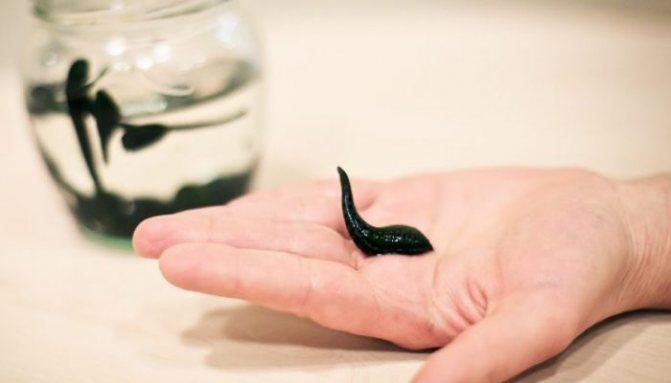
Experienced hirudotherapists claim that after using leeches the patient may experience some discomfort:
- The skin in the bite area turns red.
- There is slight swelling (sometimes up to ten centimeters), the bites look noticeably swollen.
- Skin itching occurs, which becomes especially pronounced within one to two days after a hirudotherapy session.
- A local increase in temperature may be observed.
Thus, the itching that occurs after a leech bite is completely natural. It becomes a normal skin reaction, exactly the same as after the bites of various blood-sucking insects, for example, mosquitoes, midges, etc. The described symptoms normally disappear within four days.
Hirudotherapists call such manifestations a prefix or post-prefix reaction; they are completely normal and natural, but they should not be confused with the occurrence of allergies and the development of various complications.
The severity of unpleasant symptoms depends on the individual characteristics of the patient, the sensitivity of his skin and the activity of the immune system. Quite often, the prefix reaction is confused with individual intolerance (allergy) and is considered as a reason to stop treatment with leeches.
When biting the skin, the leech secretes saliva, which contains many enzymes. It enters the body and triggers the release of histamine from mast cells.
This is what explains the occurrence of redness and itching.
Determination of sensitivity
If treatment sessions with leeches are planned, then the patient is advised to first consult with an allergist to determine whether he has an individual intolerance to these freshwater worms specifically. Diagnosis is carried out in a laboratory.
As for the hirudotherapy session itself, antihistamines should be available in the specialist’s office. If during the procedure an allergy does begin to appear, it is necessary to stop treatment and take an antiallergic drug as soon as possible. Cold in the form of ice cubes or rubbing the affected skin surfaces with a cold chamomile decoction also helps eliminate swelling and itching. Further treatment should be carried out by an allergist.
What can leeches treat?
The branch of medicine that uses leeches to treat diseases is called hirudotherapy. Indications for their use are:
Leech bites often cause skin itching, fever, and other symptoms that are very similar to allergic ones.
However, there is also a real hypersensitivity reaction in the body associated with leeches. Oriental varieties of leeches are considered especially allergenic. Their saliva contains a large number of specific enzymes, which provoke a reaction in the body.
Often the wounds that remain on the body begin to fester. Most often, this problem occurs if low-quality leeches grown in the wild are used.
Methods for stopping the prefix reaction
After the bandage is completely removed, the wound left after the blood-sucking worm has been sucked in is treated with a medical aseptic, the strength of which is at least 70%, and then a bactericidal patch is glued onto it.
Performing hygienic procedures in the shower is permissible only one day after the hirudotherapy procedure, and taking a bath no earlier than 5 days later. Scratching the skin at the site of the bloodsucker’s suction, even with unbearable itching, is categorically not recommended, as this can easily open up access to penetration into the body infections.
If the discomfort is very disturbing, it can be alleviated with the help of alcohol-containing medicinal and cosmetic liquids, lotions or herbal tinctures.
A visible mark in the bite area may remain for several weeks or months. All this time, it may itch slightly, causing a person significant discomfort and reluctance to carry out a repeat procedure.
In order to reduce the manifestations of such an unpleasant reaction, experts advise using a number of methods that can improve blood circulation in the places where leeches are placed, as well as some distracting means. In this case, treating wounds with weak solutions of soda or potassium permanganate helps a lot.
Usually, when, after applying leeches, the patient begins to suffer from severe skin itching, the doctor prescribes him a suitable antihistamine.
Most often, in case of a hyperactive reaction, that is, the third degree of development of negative manifestations, the following medications are prescribed:
- The use of elimination procedures in the treatment of the itching effect (administering enemas and taking sorbents to cleanse the intestines).
- Herbal medicine, the use of herbal infusions and decoctions to improve liver function and normalize metabolism.
- Carrying out hydrotherapy procedures that increase blood circulation in the skin.
- The use of medicinal and cosmetic products that can significantly reduce the negative manifestations of the prefix reaction. And also accelerate regeneration processes in the skin.
Of the medications that hirudotherapists use to relieve a patient’s itching from leeches, the drug from the International Pharmaceutical Company Lomilan, produced in Slovenia, has good recommendations. The effect of its use appears within half an hour, and can last for a day.
How to relieve itching?
If the discomfort from the post-prefix reaction is especially pronounced, you need to restrain yourself. Scratching the skin at the site of the bite can lead to infection and increase the risk of scarring.
If your skin is very itchy, you can try to relieve the discomfort with various antihistamines (allergy medications). In principle, for this you can use any product with such properties that is available in your home medicine cabinet. Particularly effective can be second-generation medications that contain cetirizine, loratadine, azelastine, desloratadine, etc. One tablet will be enough to block histamine receptors, which cause redness and itching.
You can also use various local remedies to prevent the bite site from itching:
- Giruda cream (produced by Giruline laboratory). This drug is specially created for hirudotherapy; it is believed that its use helps enhance the effect of leeches. The manufacturer claims that such a cream is capable of activating metabolism in the skin, accelerating the healing of wounds and the resorption of bruises. It reduces the risk of scarring, eliminates hyperemia, swelling and itching at the bite sites.
- Sinaflan ointment (based on the hormone glucocorticosteroid fluocionolone acetonide). This drug has anti-inflammatory, antiallergic, antiexudative and antipruritic properties. Quite quickly relieves the unpleasant symptoms of post-prescription reaction, including itching and redness after leeches, but has a number of contraindications for use. Flucinar and Ezacinon ointments have similar properties.
- Regular iodine. You need to moisten a cotton swab with it and lubricate the skin around the bite.
- Valocordin or Corvalol. With these products you need to moisten cotton balls and apply them to the bite sites.
- Peppermint oil or tea tree oil. It is also recommended to apply it with a sponge or cotton ball to those areas of the skin that are especially itchy.
- Balm Rescuer. The product has a beneficial effect on the skin, promotes the active course of regeneration processes and eliminates unpleasant symptoms after bites.
Bite tests and types of post-attack reactions
To avoid complications, swelling and irritation during hirudotherapy, it is advisable to conduct a special test for dermographism in advance. The procedure is very simple: you need to take a pencil and run it with the back side over the skin of the abdomen, applying little force.
A bright red mark that does not go away for several minutes indicates red dermographism. This means that the patient's autonomic nervous system reacts very strongly.
A white stripe with a red line inside indicates white dermographism. If both of these stripes have a bright shade, then the patient has mixed dermographism. In the first and third cases, there is an increased risk of a post-attack phenomenon due to a worm bite.
The level of reaction is also affected by the type of leeches used. The most severe redness is observed when oriental medicines are used - Hirudo orientalis.
The smaller the animal, the smaller the bite mark, and, accordingly, the speed of wound healing. A small leech leaves virtually no scars, and those that appear dissolve in a short time. Regardless of this, the occurrence of irritation after therapy is not affected by size.
Preventive measures
The main preventive measure for the appearance of redness and swelling is taking a medical history by a hirudotherapist. A blood clotting test and a complete blood count must be assessed before the procedure. A doctor should check for bruising and allergies. After collecting anamnesis, decide how many leeches are permissible to administer to the patient. Before the procedure, it is necessary to measure blood pressure and monitor it during and after the procedure.
The patient's body should be washed clean with a neutral-smelling product (baby soap).
In order to prevent infections, the prescription of antibiotics, such as sulfamethoxazole, is justified. After the procedure, the wound is treated with a 3% solution of hydrogen peroxide, tightly bandaged and the bandage is removed after 24 hours. Under no circumstances should you scratch wounds!
INTERESTING fact: Treatment of wen, eczema, gout with leeches
It is necessary to monitor the patient, because chronic diseases may worsen after the procedure. This stage is inevitable, this is the stage of complete recovery.
There is no need to worry too much and ask questions about how to relieve swelling when treated with leeches, or how to treat itching, if the patient has chosen a reliable, trained specialist, he will help minimize all prefix reactions.
Health to you!
What to do with swelling on the face
Facial swelling after leeches is an extremely rare occurrence. This is the so-called prefix reaction of the body to the presence of special glands in the saliva of leeches. As a rule, it normally appears after 3 procedures. It indicates the activation of the patient’s immune system and is completely normal. Dentistry and gynecology rarely encounter this phenomenon.
How to relieve swelling after leeches? If the patient has severe swelling of the face, it is necessary to warn the person to make a cool compress at home for 15 minutes on the face with tea or herbs, and exclude food and drink 3 hours before bedtime. This will be enough and within a few hours the patient will see the result. There is no need to panic.
INTERESTING fact: Leeches for stomach ulcers and gastritis
By the way, leeches themselves for puffiness under the eyes are the most accessible and popular procedure, a kind of injection of health. You can also use heparin ointment for swelling around the eyes, which you can find out in more detail by following the link.
For treatment and rejuvenation, they are placed on the temporal region. Start the course using two worms.
Contraindications
Permission for a course of procedures is given by the attending physician. Hirudotherapy sessions are prohibited in the following cases:
- pregnancy;
- anemia (severe form);
- purulent-septic pathologies;
- low blood pressure over a long period;
- allergic reactions to substances secreted by leeches;
- hemophilia (poor blood clotting);
- oncopathology.
Important! Before prescribing treatment with leeches, the patient must take a blood test to find out the prothrombin index so that uncontrolled bleeding does not begin during the procedure. Carrying out procedures for anemia and low blood pressure provokes general weakness, dizziness, can lead to fainting, and a sharp decrease in hemoglobin levels.
Specifics of the original technique
Features of the technique are the attachment of leeches in strictly defined zones. Doctors identify several active points on different parts of the body.
Main areas for hirudotherapy:
- cervical;
- hepatic;
- lumbar;
- sternum area;
- extraperitoneal;
- sacral zone.
Nuances of the procedure:
- The leech remains on the body for 40 to 60 minutes, after which it falls off, and discharge is observed from the wound for some time. Doctors do not recommend wiping the epidermis with an alcohol solution before and after the session to reduce the risk of infectious complications;
- the doctor bandages the area, and if necessary, applies an additional layer of sterile bandage. Sometimes the wound “bleeds” for 12–24 hours: if the reaction is mild, there should be no panic, such manifestations are considered normal. If severe bleeding develops, the help of a doctor is required;
- An important point is a temporary exacerbation of chronic pathologies. The process indicates the activation of immune defense, the body’s fight against a painful condition. The patient should be aware of the reaction to the action of leeches in order to avoid unnecessary nervousness and unnecessary worries. On the path to recovery, the body must overcome the disease.
On a note! The frequency of sessions is once or twice a week. During the procedures, the doctor alternates active zones, taking into account the severity of the allergic process and the patient’s condition. For any type of allergy, a good effect is noticeable when exposed to active points in the cervical, thoracic, sacral, and liver areas. Each point for hirudotherapy has its own number. In case of allergic reactions, a leech attachment is required on sensitive areas with numbers 1–2, 10–14.
Allergy treatment with leeches: reviews
The results of hirudotherapy are satisfactory for many patients. The first positive changes are noticeable after the first sessions:
- the strength of allergic reactions decreases;
- well-being improves;
- new symptoms of the disease and dangerous attacks appear less frequently.
With hirudotherapy, the need for medications decreases, activation of blood and lymph flow strengthens the immune system, and reduces the risk of new skin rashes. The procedures prevent venous congestion, improve the condition of the vascular wall, remove toxins, and reduce swelling.
Look at the list and characteristics of antihistamines for skin allergies.
The symptoms and treatment of allergic tracheitis in adults and children are described in this article.
Go to the address and read about how and how to treat allergic diathesis in adults.
Price
It is impossible to indicate the exact price of a therapeutic course before talking with the patient, clarifying the diagnosis, studying test results, and selecting the optimal number of procedures. The cost depends on the number of leeches used during treatment.
When developing a treatment regimen for each patient, the doctor takes into account many nuances. Experienced hirudotherapists always carefully talk with the patient and carefully select points for attachments during sessions. Haste and the use of leeches without taking into account contraindications often results in complications, the condition of the allergic patient remains the same or worsens.
Average prices of hirudotherapy:
- installation of three leeches - 1500 rubles;
- installation of five leeches - 2500 rubles.
From 6 to 8 procedures are required; to consolidate the result, the patient must undergo two or three courses. In the acute stage, 2 or 3 attachments are required per session; in the remission stage or as the allergic process subsides, the number increases to five or six.
Hirudotherapy is beneficial as part of complex therapy for allergic diseases by ensuring sterility during the session and selecting optimal areas for the attachment of leeches. It is important to find an experienced hirudotherapist and find out reviews about his activities. Therapeutic sessions using medicinal leeches are allowed only after visiting an allergist and the doctor’s approval of the method of alternative medicine.
You can learn more about the benefits and rules of conducting hirudotherapy sessions for allergic diseases from the following video:
An allergy is a malfunction of the immune function. It manifests itself in the form of urticaria, runny nose, asthma, neurodermatitis and other symptoms. The phenomenon is accompanied by impaired microcirculation of blood and lymph in the body and the appearance of swelling.
Leeches are great for eliminating allergy symptoms.
This is due to the fact that:
• Firstly, hirudin, destabilase, hyaluronidase, aeglins, apyrase, hirustazin and dozens of other enzymes improve microcirculation and have anti-allergic and anti-inflammatory effects.
The blood becomes more liquid, blood clots dissolve, and the lumen of blood vessels increases. As a result, the supply of oxygen and nutrients to cells is restored, congestion and swelling disappear.
• Secondly, a leech bite stimulates the production of antibodies in the lymphatic system. As a result, lymph is renewed and the immune system is strengthened. This is possible due to the irritating mechanical factor of a leech bite. Lymph oozes from the wound, which forces the body's defenses to activate.


